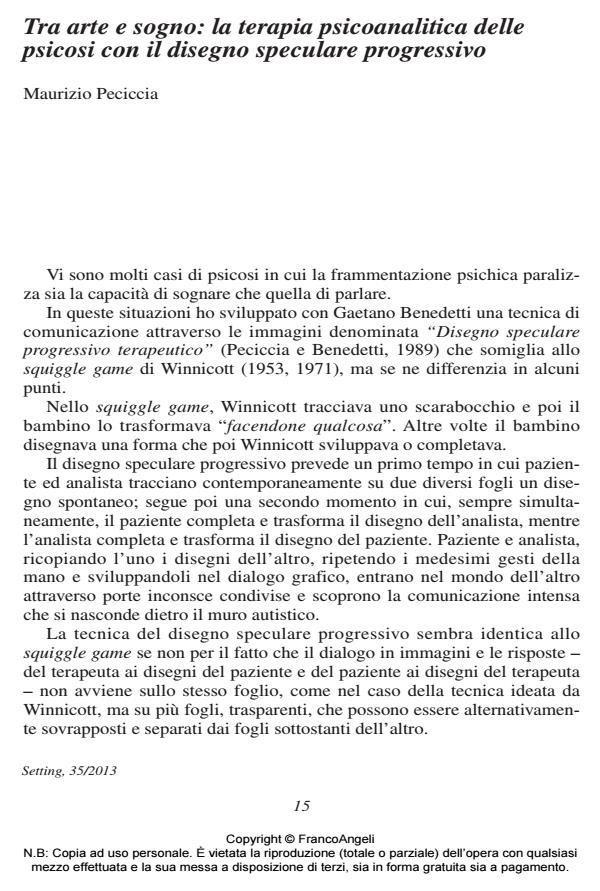Tra arte e sogno: la terapia psicoanalitica delle psicosi con il disegno speculare progressivo
Journal title SETTING
Author/s Maurizio Peciccia
Publishing Year 2014 Issue 2013/35
Language Italian Pages 31 P. 15-45 File size 899 KB
DOI 10.3280/SET2013-035002
DOI is like a bar code for intellectual property: to have more infomation
click here
Below, you can see the article first page
If you want to buy this article in PDF format, you can do it, following the instructions to buy download credits

FrancoAngeli is member of Publishers International Linking Association, Inc (PILA), a not-for-profit association which run the CrossRef service enabling links to and from online scholarly content.
The contribution of Maurizio Peciccia, one of the closest and most original of Gaetano Benedetti’s pupils, let us know and "see" - through a large amount of clinical material - an eight years long psychotherapy with a psychotic patient, treated by Benedetti’s model of schizophrenia and specifically by the "therapeutic specular progressive drawing", a therapeutic technique derived by the "squiggle game" by Winnicott (1953, 1971). It let us save a form of communication with patients whose psychic fragmentation is so severe that dreaming and speaking faculties are forbidden. It consist in a therapeutic technique of therapist’s and patient’s drawing together and thus building, by the transitional and progressive stuff of their drawing product, the therapeutic stages which Benedetti called "the transformation of the patient’s self through the therapist’s positivization"; the "progressive psychopathology" and the "transitional subject". Forty pictures and brief clinical comments shows this original view of therapeutic work with psychotic patients in a very vivid way.
Maurizio Peciccia, Tra arte e sogno: la terapia psicoanalitica delle psicosi con il disegno speculare progressivo in "SETTING" 35/2013, pp 15-45, DOI: 10.3280/SET2013-035002